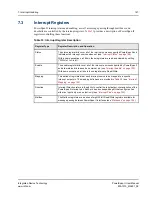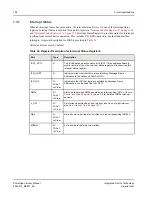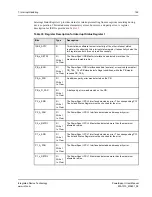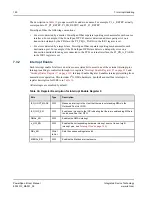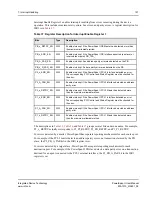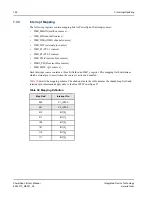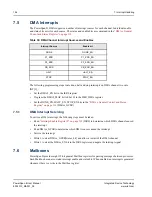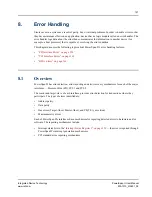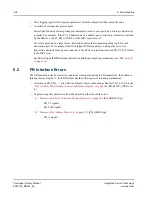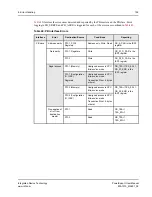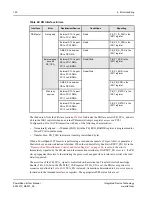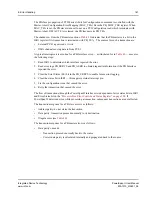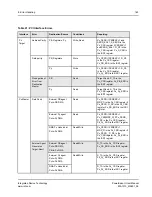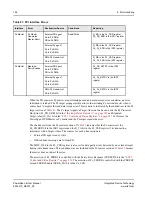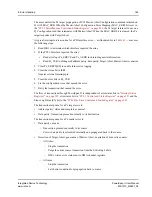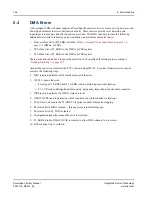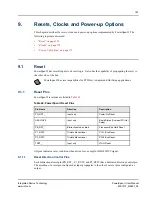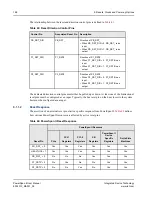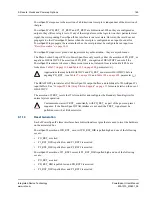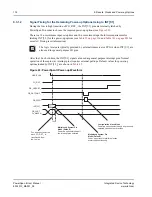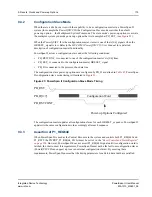
8. Error Handling
161
PowerSpan II User Manual
80A1010_MA001_09
Integrated Device Technology
www.idt.com
The PB slave propagation of PCI Master-Abort for Configuration commands is controlled with the
Master-Abort Configuration Error Mapping (MAC_TEA) bit in the PB_MISC_CSR register. When
MAC_TEA is set, the PB slave returns all ones on a PCI Configuration read which terminates with
Master-Abort. If MAC_TEA is cleared, the PB slave asserts PB_TEA_.
The shaded row from the PB master section of
indicates that the PB master sets a bit in the
ISR1 register if its transaction is terminated with PB_TEA_. The sources for such a transaction are:
•
External PCI-1 agent read or write
•
DMA channel moving data to/from PCI-1
A typical interrupt service routine for a PB Interface error
—
as illustrated for in
executes
the following steps:
1.
Read ISR1 to determine which interface reported the error.
2.
Read error logs PB_ERRCS and PB_AERR to obtain diagnostic information if the PB Interface
reported the error.
3.
Clear the Error Status (ES) bit in the PB_ERRCS to enable future error logging.
4.
Clear the status bit in ISR1
—
this negates external interrupt pin.
5.
Fix the configuration issue that caused the error.
6.
Retry the transaction that caused the error.
The flow of transactions through the PowerSpan II interfaces is independent of error status bits in ISR1
and Error Status bit in the
“Processor Bus Error Control and Status Register” on page 302
. If
PowerSpan II detects an error while processing a transaction, subsequent transactions are not affected.
The transaction response for a PB slave error is as follows:
•
Address parity: do not claim the transaction
•
Data parity: transaction proceeds normally to its destination
•
Illegal access (see
The transaction response for a PB master error is as follows:
•
Data parity on reads:
— Transaction proceeds normally back to the source
— Correct data parity is calculated internally and propagated back to the source

